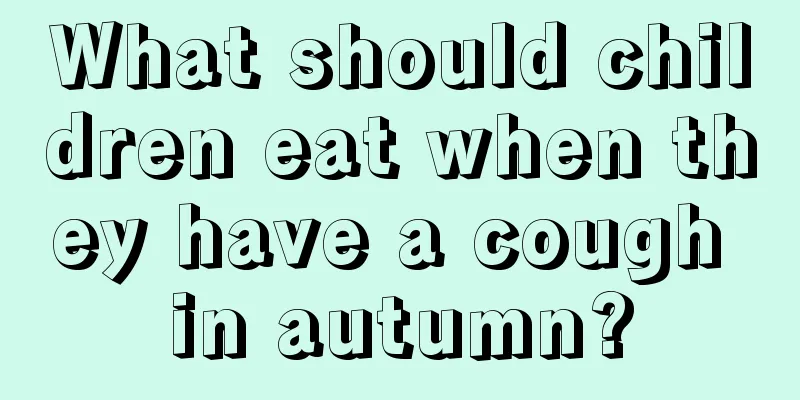Infant tendon inflammation

|
Many children are particularly prone to tenosynovitis when they are young. After suffering from this disease, its clinical manifestations are very similar to those of gastroenteritis. Therefore, for some inexperienced mothers, they cannot accurately judge the baby's condition and may give the child some stomach-nourishing drugs indiscriminately, which will cause the disease to become more and more serious. So what should we do with tenosynovitis in children? Tenosynovitis is an inflammation that forms at the junction of the tendon and the shell plate of the hand. It is mainly caused by frequent activity of the tendon in a short period of time, excessive force, or chronic cold stimulation, which leads to inflammatory reaction and fibrous degeneration of the tendon sheath tissue, thickening of the tendon sheath, and stenosis of the sheath. The movement of the tendon in the sheath is restricted, and the inflammatory reaction also causes local pain. Tenosynovitis is a non-bacterial inflammation. Mild symptoms can be treated with massage and acupuncture, while severe cases require surgery. Generally, the narrow part of the tendon sheath is incised and partially removed so that the tendon sheath no longer squeezes the tendon. The tendon sheath is a sheath-like structure that surrounds the tendon. The outer layer is fibrous tissue, which is attached to the bones and adjacent tissues and plays a role in fixing and protecting the tendons. The inner layer is the synovial membrane, which nourishes the tendon and secretes synovial fluid to facilitate the sliding of the tendon. Repeated excessive friction causes inflammation and edema of the tendon and tendon sheath, and the thickening of the fibrous sheath wall to form a narrow ring. The fibrosis and thickening of the tendon make it difficult for the tendon to slide in the sheath, which is stenosing tenosynovitis. Tenosynovitis is more common in people aged 30-50 years old, with more women than men, with a ratio of 10:1. It is common in occupations that require long-term repetitive activities that lead to tendon strain, such as typists, instrumentalists, bank employees, cargo movers, or industries that require long-term computer operation. It may also be induced by trauma. In addition, osteoarthritis, some immune diseases, diabetes, and even infection may also cause tenosynovitis. Women who are pregnant, lactating, or menopausal have a higher risk of developing the disease than usual due to endocrine changes such as hormone levels. Nowadays, due to excessive use of computer keyboards, mice, mobile phones, etc., people will also cause their fingers to flex and extend for a long time, repeatedly, and vigorously, resulting in excessive friction of the tendons, leading to tenosynovitis, also known as "keyboard hand" Causes During their course, the flexor and extensor tendons pass through some bone fiber channels, namely the tendon sheath structure, at the angled part of the joint. Their function is to make the tendon tightly attached to the bone surface, so that it will not be stretched or slide left and right due to the angled movement of the joint, thereby increasing the effectiveness and accuracy of tendon sliding. When the tendon slides repeatedly and excessively for a long time, it rubs excessively against the tendon sheath tissue, inducing an inflammatory response, causing the tendon sheath tissue to swell, proliferate and narrow, resulting in pain, obstructed tendon sliding, and even tendon incarceration, leading to tenosynovitis. In addition, diabetes, rheumatoid arthritis, infectious diseases, acute trauma, etc. may also induce tenosynovitis. The tendon sheath is distributed in the wrist, metacarpophalangeal part, foot and biceps tendon groove of the shoulder. Therefore, tenosynovitis can occur in the fingers, toes, wrist, ankle and shoulder, especially in the wrist and fingers, such as radial styloid tenosynovitis and finger tenosynovitis. |
<<: What will happen if a 10-year-old doesn't like to wash his face?
Recommend
Why are there tears in the baby's eyes?
It is normal to shed tears. We usually shed tears...
How to deal with a high fever in children?
Nowadays, many parents are very concerned about t...
What medicine should children take for cough
Coughing in children is quite common and is somet...
Treatment for chest tightness and shortness of breath in children
There are many reasons why children experience ch...
How to supplement zinc deficiency in babies?
My baby is 3 years old and goes to kindergarten. ...
Why does my child always suck his fingers?
Parents with babies at home will find that their ...
Does hand, foot and mouth disease itch in children?
Although hand, foot and mouth disease is not that...
What are the precautions after the baby's umbilical cord falls off?
Generally speaking, under normal circumstances, t...
What to eat for children to nourish their brains
With the continuous development of modern society...
Use sesame oil on baby's lip
Babies in their early childhood are very naughty....
How to make steamed eggs for 10-month-old babies
When the baby grows to a certain stage, it is nec...
Can children drink garlic and rock sugar water?
Garlic is a very common ingredient in daily life ...
Children occasionally twitch
We all know that children's body functions ar...
The relationship between family type and children's happiness
Children from single-parent or blended families a...
What causes amblyopia in children?
Vision is one of the most important senses of peo...









